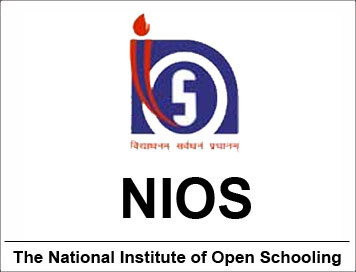(Download) NIOS Syllabus Of Geography Senior Secondary
Disclaimer: This website is NOT associated with CBSE, for official website of CBSE visit - www.cbse.gov.in
(Download) NIOS Syllabus Of Geography Senior Secondary
GEOGRAPHY
1. RATIONALE
The discipline of Geography promotes systematic studies of interaction between man and environment. The studies are undertaken on both the micro and macro levels. These studies at global, regional and local levels are taken up within the spatial and temporal frame work.
The contents of Geography become highly fascinating even to the beginner. Man has a reason to feel excited over the fact that his is a living planet pulsating with life and constant change of every possible description. As far as his knowledge goes this is the only celestial body of its kind inhabited with intelligent life which he can think of. Interplay between man an environment being the focal point of geographic study, its contents have become very exciting because of man’s ingenuity and ability to adapt himself to the environmental variations spread over time and space. Since man and environment are equally dynamic, their interrelationship has been growing and becoming more and more complex day by day. A student of Geography is bound to be thrilled by the new insight into the exciting partnership between two.
Since Geography deals with both man and environment, it acts as a natural bridge between humanities and sciences. The former includes the contents from economics, history, political science, sociology, anthropology and commerce. The latter include earth sciences such as geophysics, geology, geomorphology, oceanography, climatology and meteorology. Astronomy and space sciences also provide a meaningful back drop. It is against this broad perspective that the course in Geography has been drawn up for the Senior Secondary Stage. It is hoped that it would be dealt with accordingly. Previously, the courses of study was divided in to two categories i.e. foundation and certification units. In the revised syllabus, all the lessons are compulsory and questions will be asked from each lessons according to the weightages of marks assigned to each module.
To the extent possible, the practicals should be dovetailed to the theoretical portions. The theoretical knowledge can be better assimilated and reinforced through its practical application. Practical problems can be quickly grasped only through the mastery over theory and basic principles. Thus theory and practicals must be seen in their complementary and reinforcing role instead of dealing with them in compartments in a routine or mechanical fashion.
2. OBJECTIVES
The main objectives of this course are as follows:
-
To provide spatial (i.e. areal and locational) and temporal (i.e. time) dimensions to the patterns of interactions between man and environment for their proper appreciation.
-
To help in appreciating different and changing social perceptions of environments as seen by different groups of people from place to place and by the same people from time to time.
-
To help in understanding that man everywhere tries to make the best possible use of natural resources commensurate with his social and technological level of development.
-
To help in realizing that man must use his environment and natural resource base on a continuing basis avoiding their destruction and westage.
-
To help in understanding that the study of Geography of India should lead to emotional integration of her diverse people and removal of regional imbalances in its economic growth and developments.
-
To help in appreciating the spirit and structure of Geography as discipline.
3. DISTRIBUTION OF MARKS
| Module |
Marks |
| 1. The Earth – A Living Planet | 03 |
| 2. The Domain of Air on the Planet Earth | 08 |
| 3. The Domain of Water on the Planet Earth | 04 |
| 4. Changing Face of the Planet Earth | 12 |
| 5. Life on the Earth | 08 |
| 6. Physical Setting in India | 08 |
| 7. Natural Resources and their Development in India |
07 |
| 8. Man-made Resources and their development in India | 12 |
| 9. Human Resource and their Development in India |
08 |
| 10. Optional Module | |
| A. Teaching of Geography at Primary Level |
|
| OR | |
| B. Geography of Tourism in India | 10 |
| OR | |
| C. Field Work in Geography | |
| 11. Map and its Elements | 05 |
| 12. Map Interpretation | 05 |
| 13. Statistical Diagram | 05 |
| 14. Practical Record Book & Viva Voce | 05 |
| Total | 100 |
